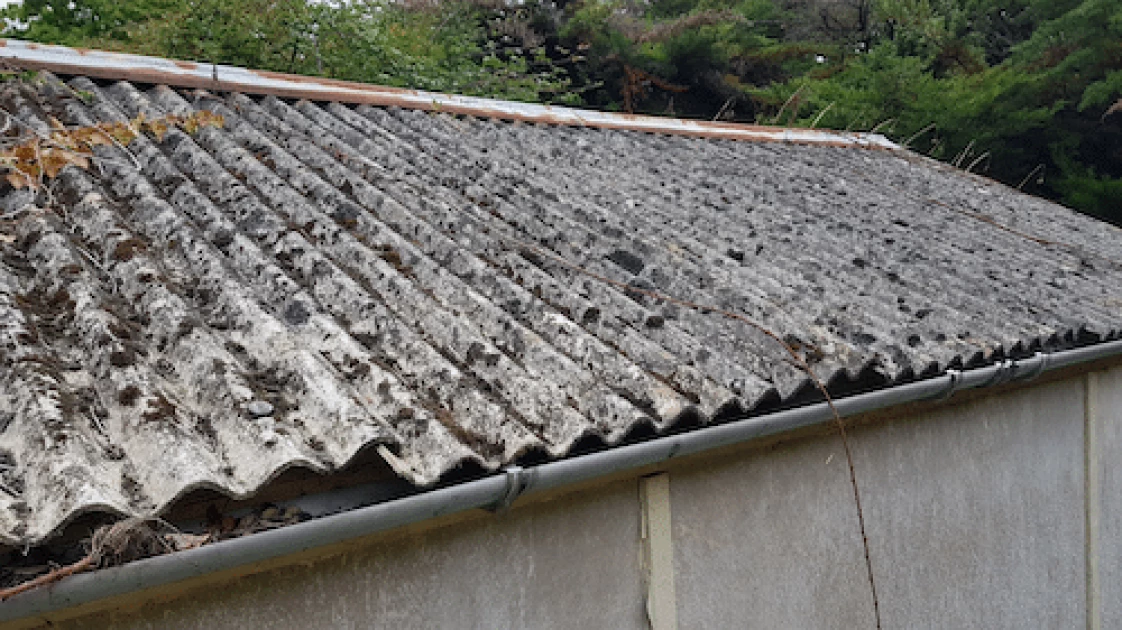Asbestos: What we know about toxic roofs banned in Kenya


Audio By Vocalize
Asbestos roofing, primarily asbestos cement (ACR) sheets, was popular due to its durability and fire resistance but is now banned globally due to health risks from inhaling asbestos fibers, which cause cancer and lung diseases. Despite the ban in 2006, many older roofs remain, posing dangers from deterioration and during renovations.
According to Legal Notice No.121 of the Environmental Management and Coordination (Waste Management) Regulations, 2006, waste containing asbestos is classified as hazardous and must be disposed of in a manner approved by NEMA.
Classified as a human carcinogen, asbestos exposure has been directly linked to severe illnesses, including lung cancer, asbestosis and mesothelioma, a deadly cancer that affects the lining of the lungs, abdomen and heart.
In March 2025, Cabinet approved the phase out of asbestos roofing material.
By then, Kenya held about 30 million tonnes of the roofing material.
It was identified that the National Treasury had 8084 tonnes of asbestos, Ministry of lands (4941 tonnes), Ministry of Interior (4669 tonnes), Ministry of Education (3181 tonnes), and Ministry of Health (2144 tonnes).
Other buildings with asbestos were Kenyatta National Hospital, Kisii Teachung and Referral Hospital, Kisumu County Referral Hospital, Meru Cancer centre Houses, Meru Teaching and Referral Hospital, Kenya Medical Training College
Learning institutions with the roofing include; Kenyatta University, Starehe Boys, Bungoma High School, Redeemed gospel church Huruma, Our lady of Fatima Catjolic Church and CITAM Registered Trustees.
A nationwide initiative in Kenya has been approved to remove asbestos from public and private facilities to address these health risks.
Inhaling these fibers can lead to serious and potentially fatal health conditions like lung cancer and other respiratory diseases.
The primary health risk from asbestos roofing arises when the material is disturbed, causing microscopic, fibrous asbestos particles to become airborne and inhaled. Inhaling these fibers can lead to serious diseases, including lung cancer, mesothelioma, and other cancers.
The risk is low if the roofing is undamaged and undisturbed, as the asbestos is securely bound within the cement. However, if the roofing is cracked, damaged, or weathered, the risk increases, and professional advice should be sought to prevent further exposure and manage the material safely.
The main health threat occurs when asbestos cement roofing is damaged or disturbed. This can happen through:
• Cracking or breaking
• Work activities that disturb the material
• Weathering and deterioration over time
When the roofing material is compromised, it releases respirable asbestos fibers into the air. These fibers, even in low concentrations, pose a health risk to people who inhale them.
If your roofing contains asbestos and is in good condition, the safest approach is to leave it undisturbed.
If the roofing is damaged, consult with professionals for guidance on the best course of action. They can advise on how to seal exposed edges or manage the material to prevent further fiber release.
For extensive damage or if removal is necessary, only trained professionals should handle the removal to ensure proper containment and disposal.
For most people, asbestos-related diseases develop decades after initial exposure, with symptoms often not appearing for 10 to 50 years. The period between first exposure and the onset of disease is known as the latency period. Because of this long delay, people are often diagnosed with these illnesses in their 60s or older.
If asbestos-containing material is more than slightly damaged or if you are going to make changes in your home that might disturb it, repair or removal by a trained and accredited asbestos professional is needed.
Asbestos Do's and Don'ts for homeowners
• Leave undamaged asbestos-containing materials alone.
• Keep activities to a minimum in any areas having damaged material that may contain asbestos, including limiting children's access to any materials that may contain asbestos.
• Take every precaution to avoid damaging asbestos-containing material.
• Have removal and major repair done by people trained and qualified in handling asbestos. It is highly recommended that sampling and minor repair also be done by a trained and accredited asbestos professional.
• Don't dust, sweep, or vacuum debris that may contain asbestos.
• Don't saw, sand, scrape, or drill holes in asbestos-containing materials.
• Don't use abrasive pads or brushes on power strippers to strip wax from asbestos flooring. Never use a power stripper on flooring that may contain asbestos.
• Don't sand or try to level asbestos flooring or its backing. When asbestos flooring needs replacing install new floor covering over it, if possible.
• Don't track material that could contain asbestos through the house. If you cannot avoid walking through the area, have it cleaned with a wet mop. If the material is from a damaged area or if a large area must be cleaned, call an asbestos professional.


Leave a Comment